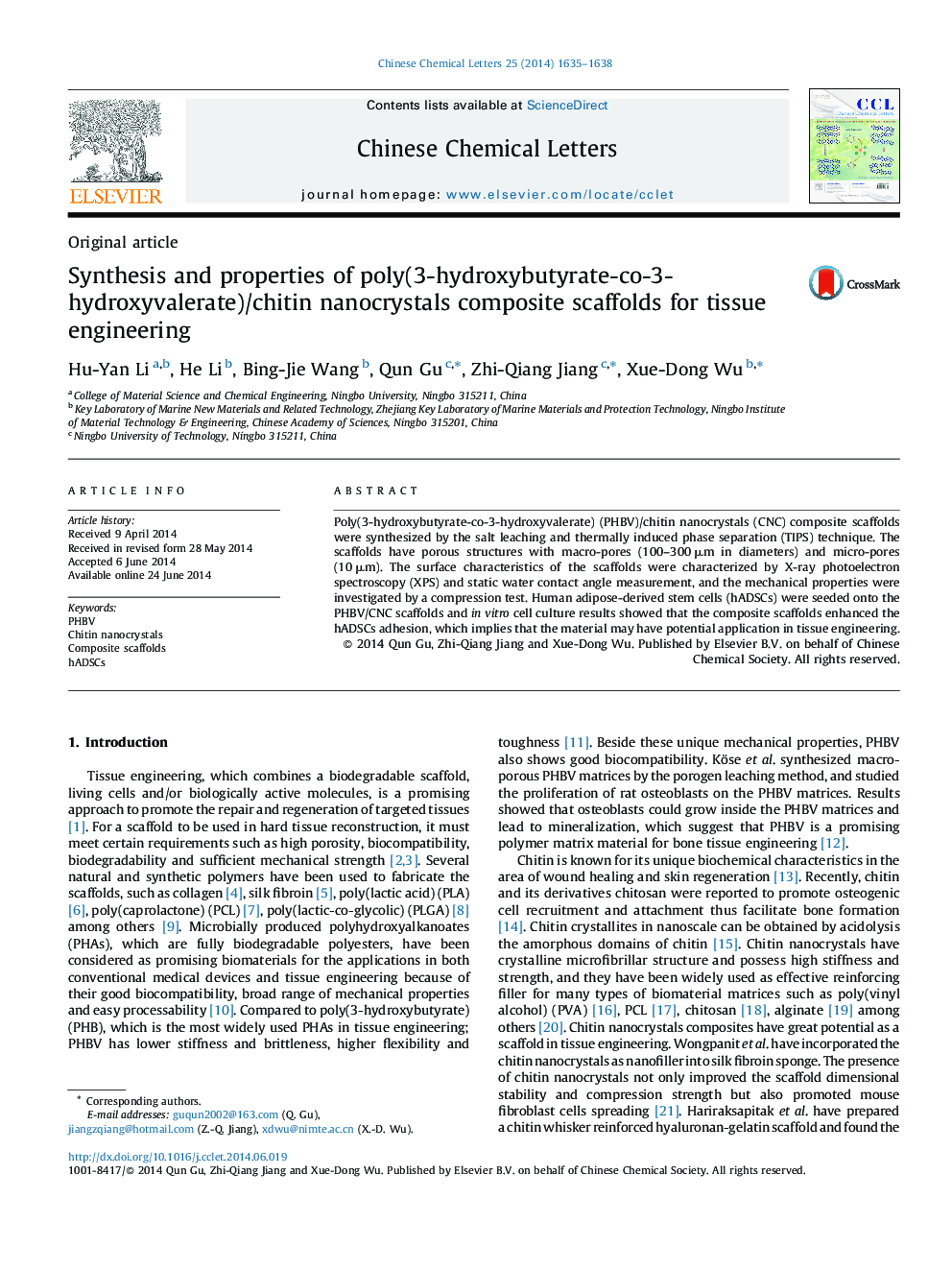| Article ID | Journal | Published Year | Pages | File Type |
|---|---|---|---|---|
| 1254125 | Chinese Chemical Letters | 2014 | 4 Pages |
Poly(3-hydroxybutyrate-co-3-hydroxyvalerate) (PHBV)/chitin nanocrystals (CNC) composite scaffolds were synthesized by the salt leaching and thermally induced phase separation (TIPS) technique. The scaffolds have porous structures with macro-pores (100–300 μm in diameters) and micro-pores (10 μm). The surface characteristics of the scaffolds were characterized by X-ray photoelectron spectroscopy (XPS) and static water contact angle measurement, and the mechanical properties were investigated by a compression test. Human adipose-derived stem cells (hADSCs) were seeded onto the PHBV/CNC scaffolds and in vitro cell culture results showed that the composite scaffolds enhanced the hADSCs adhesion, which implies that the material may have potential application in tissue engineering.
Graphical abstractA porous PHBV/CNC composite scaffold is synthesized by the TIPS and salts leaching method. The biocompatibility of this composite scaffold is investigated by in vitro hADSCs culture.Figure optionsDownload full-size imageDownload as PowerPoint slide
